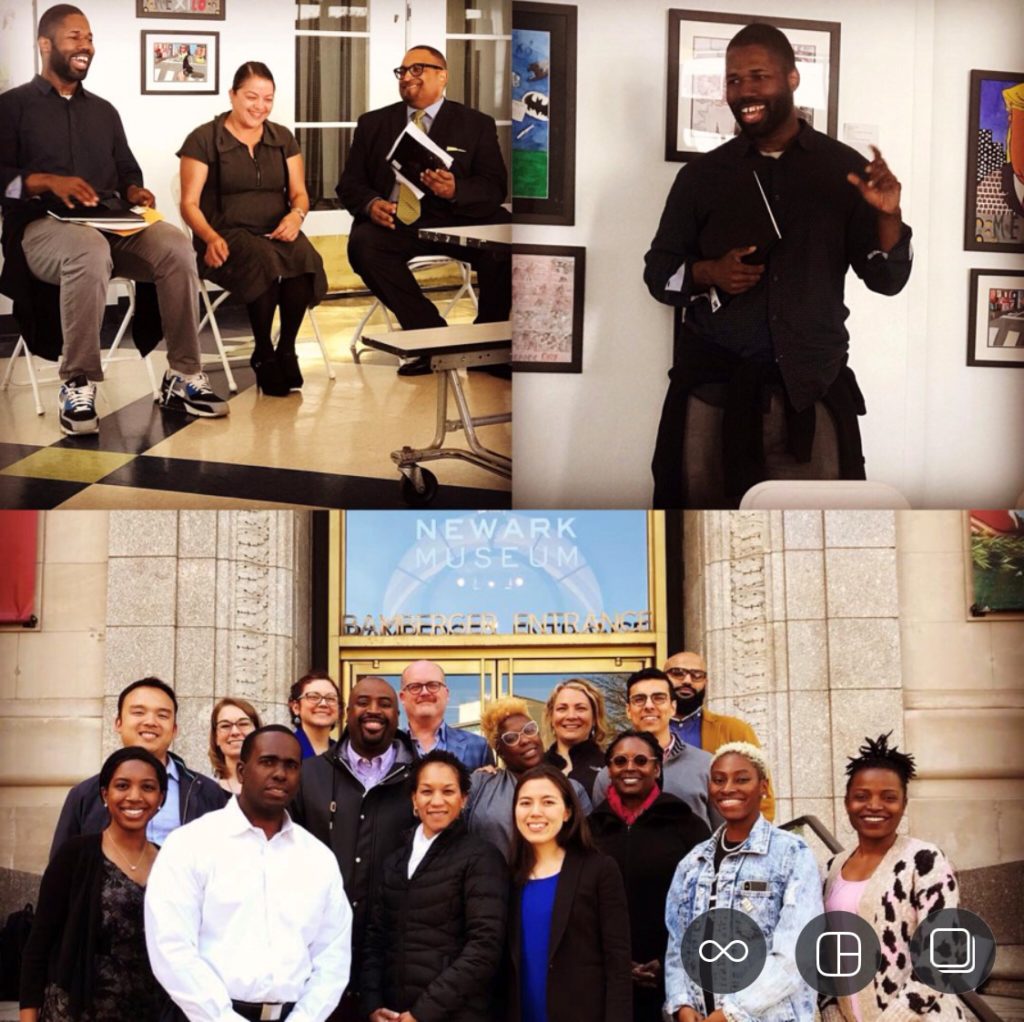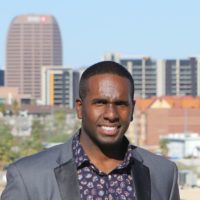By Dominic Braham, PLACES Fellow and Assistant Program Officer for LISC Phoenix
Going PLACES is an occasional blog series featuring the voices and experiences of TFN’s PLACES Fellows. For more information on the fellowship, and to read past blog posts from our fellows, visit here.
The inequities in workplace, community development and philanthropy are very real to many, including myself as a cisgendered African American male in the space of nonprofit community development work. These organizations exist to empower and fund projects that mainly impact people of color, but the majority of internal leadership does not reflect those demographics. Imagine you are a person in a leadership position where the outcomes of inequity such as redlining, slum lords, predatory lending, lack of business investments and systemic racism affected your family or even your personal life while doing this work. Now picture someone in a leadership position, who does not have to experience the outcomes of inequity personally and then the only incentive for them to do the work is “caring” about the work. Which person do you think will understand the need to push for systems change and be more impelled to take risks in improving the lives of others?
I feel fortunate to have found this fellowship of Professionals Learning About Community Equity and Smart Growth (PLACES) with the Funders’ Network for Smart Growth and Livable Communities. There is a disproportionate impact that happens when excluding the perspectives of low-income communities, often comprised of people of color, from decision-making about growth and development in their communities. The PLACES Fellowship provides the tools and resources to help those working in philanthropy to understand and eliminate the impact of these decisions.

Our first site visit to Newark helped me verbalize and strategically think about how to navigate racial equity at individual, communal, institutional and structural levels. I was able to reflect on my own privileges, such as speaking a second language, growing up with both parents, owning my own home and having fairly good health. Some of these privileges were inherited and some were attained based on my own actions. Acknowledging these privileges in my work can make me more aware of and sensitive to that bias between staff and the communities we serve. A simple example is the centering of whiteness for featured panel speakers on topics that affect low income communities of color. The lack of panel speakers who represent the community can feel almost offensive when we are talking about issues that affect that community. Continuing to center whiteness as thought leaders and featured panelists limits the conversations to a “white savior” model.
After attending our first PLACES site visit I am now asking myself:
“Am I perpetuating or pushing the status quo in my work?”
“Do I accept responses from decision makers in leadership regarding interest in funding minority-led organizations such as, ‘Well, you know this will be a heavy lift’, ‘they just don’t have their accounting in order for us to give them a grant’, ‘we tried this before and it did not work’, and ‘that organization is just not ready yet’? “
” Do we, as leaders, choose silence? “
These questions are valid, but they may not bring about the system changes we desire. The practice part of racial equity involves asking powerful follow-up questions that challenge these archaic operating procedures that perpetuate inequity and exclusion. Following up with a truth-asking practice such as, “What structures of power and privilege are we upholding with these procedures that exclude certain organizations?” is the practice of doing racial equity.
Based on our first site visit and our learning there, here are some tools to advancing racial equity that I am currently working with:
- A “redesign of our mindset” to address our own biases.
- Consistent, incremental action is transformative. Find the next immediate step – include someone new in the conversations, ask new questions, use different language. Practice.
- Decolonize the “this is how we always have done it” mentality.
- Identify, acknowledge, and redesign points at which exclusion, hierarchy, withholding, power asymmetry, are perpetuated.
I have a few personal takeaways from our trip to Newark and from my own work experiences I’d like to close with. One comes from Newark historian Junius William, who at one of our panels stated, “The power of ‘who controls the narrative’ is vital.” There is so much more to American history than what is taught in schools. A specific example that comes to mind is Benjamin Banneker, the African American inventor of crop irrigation systems. During the revolutionary war, wheat grown on a farm designed by Banneker prevented U.S. troops from starving. There is also Garrett Augustus Morgan who invented an early traffic signal, which greatly improved safety on America’s streets and roadways.
Along with the African American narrative, I have also been thinking about my own personal narrative – the stark difference of how we are seen and regarded in the eyes of our own professional/personal connections in our community compared to how we are looked at inside our own organizations and communities. I often speak with many young African Americans in community development who share the feeling of their work and worth being questioned within their organizations. Can you imagine the impact of having the support and influence of connecting resources to the social networks we hold with deeply rooted members of community, without any exclusionary red tape?
My vision for systems change is twofold. The first is changing the paradigm of how our philanthropic and community development organizations recruit and foster talent. We must allow those who come from communities that are affected to hold power in leadership efforts for their neighborhoods. We must not look at having strong individuals on our team as a threat to leadership, but allow staff to flourish in their strengths. The second would be a shift in decolonizing the internal “this is how we always have done it” mentality at our organizations Leaders must create a space were we can bring awareness and call out our unconscious bias in how we go about the work. If these changes can happen internally, I am certain the impact in dis-invested communities will be improved.
I know we are on the brink of this shift and many organizations currently are making these changes. Let’s keep the momentum going!
About the Author

Dominic Braham is an Assistant Program Officer for LISC Phoenix. He is a current fellow in the 2019 PLACES class.
